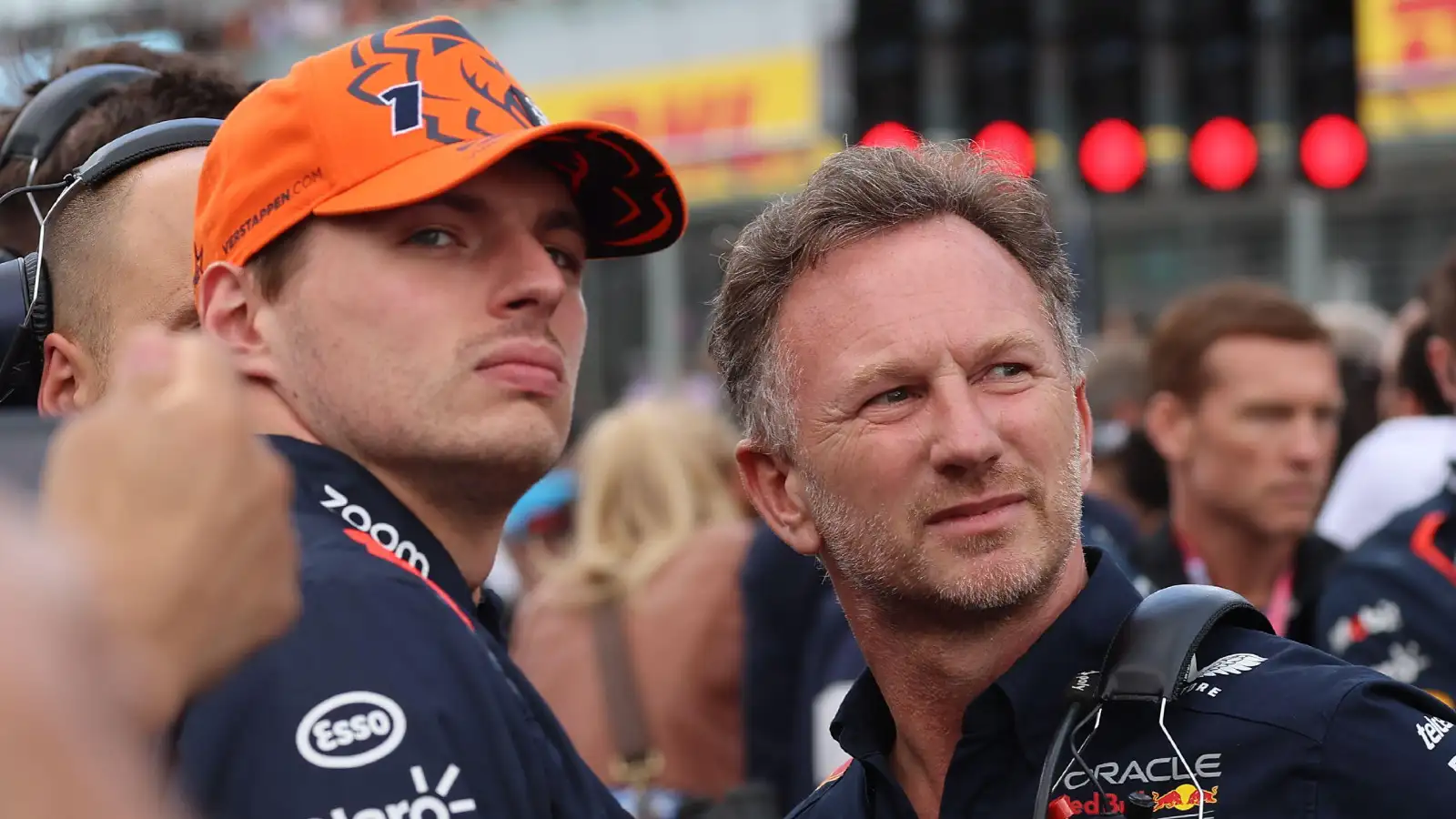In the high-octane world of Formula 1, where milliseconds can dictate the outcome of a race, every nuance of a driver’s performance is scrutinized. Christian Horner, the Team Principal of Red Bull Racing, recently shed light on why Max Verstappen experienced a slower-than-expected performance during the Baku Grand Prix. Known for his articulate insights and strategic prowess, Horner provided a detailed explanation for Verstappen’s challenges on the track, describing how various factors combined to leave the Red Bull star “hung out to dry” in Azerbaijan.
**Baku Circuit Challenges**
The Baku City Circuit, known for its demanding layout and unpredictable nature, presents a unique set of challenges. The track, with its combination of long straights and tight corners, demands an optimal balance between speed and handling. Verstappen’s struggles in Baku were not isolated incidents but rather the result of a series of intricate issues exacerbated by the circuit’s characteristics.
**Aerodynamic Set-Up Complications**
One of the primary reasons for Verstappen’s suboptimal performance was the aerodynamic set-up of the car. Horner explained that Red Bull Racing had been dealing with a particularly challenging aerodynamic package at Baku. The team’s car, designed with a high level of downforce for tracks with more corners, struggled on the long straights where lower downforce is typically more advantageous. The trade-off between straight-line speed and cornering capability was not balanced effectively for the Baku layout, leading to a performance deficit in crucial sections of the track.
Horner noted that this mismatch was a result of a compromise between different race setups throughout the season. Red Bull had focused on maximizing their car’s performance on circuits with high-speed corners, which left them less prepared for the unique demands of Baku. The team’s inability to adapt the aerodynamic set-up effectively for the Baku track contributed significantly to Verstappen’s slower lap times and overall performance.
**Tire Management Issues**
Another significant factor in Verstappen’s slower pace was related to tire management. Baku’s abrasive surface and the high-speed nature of the circuit put additional strain on the tires. Red Bull’s car, while generally strong in tire degradation management, faced challenges in maintaining optimal tire performance over the course of the race. Horner pointed out that Verstappen’s car experienced higher tire wear than anticipated, which led to reduced grip and performance as the race progressed.
The combination of high-speed corners and long straights at Baku meant that managing tire temperatures was crucial. Verstappen’s car struggled with keeping the tires within the ideal operating window, resulting in a loss of grip and confidence for the driver. This was compounded by the team’s conservative approach to tire strategy, which aimed to preserve the tires but ultimately affected overall performance.
**Race Strategy and Track Position**
Race strategy and track position also played critical roles in Verstappen’s performance at Baku. The Baku Grand Prix is notorious for its frequent safety car periods and chaotic race conditions. Horner mentioned that the team’s strategy was significantly impacted by the timing of safety cars and virtual safety cars, which often disrupt planned race strategies and force teams to adapt rapidly.
Red Bull’s strategy was to capitalize on Verstappen’s starting position and make the most of any potential advantages from safety car periods. However, the team found themselves frequently reacting to the evolving race conditions rather than executing their preferred strategy. Verstappen’s track position was affected by these strategic challenges, leading to difficulties in making up lost ground and capitalizing on overtaking opportunities.
**Competitor Performance**
It’s also important to consider the performance of competitors. In Baku, other teams, notably Ferrari and Mercedes, managed to find a better balance between speed and handling, and their drivers were able to exploit the Red Bull car’s weaknesses more effectively. Horner acknowledged that the competition had made significant strides in adapting to the specific challenges of the Baku circuit, which put additional pressure on Verstappen and the Red Bull team.
Ferrari’s improved performance, in particular, was a factor that Red Bull could not ignore. Their ability to extract more from their car on both the straights and corners gave them a competitive edge that Red Bull struggled to match. Mercedes, too, showed a strong performance, further complicating Red Bull’s efforts to secure a top position.
**Internal Team Dynamics**
Lastly, internal team dynamics and communication issues played a role. Horner admitted that there were moments when communication between the drivers and the pit crew was not as effective as it could have been. Clear communication is crucial for making timely decisions regarding race strategy, car adjustments, and responding to changing track conditions.
Verstappen, despite his driving skill and experience, faced challenges in receiving timely and accurate feedback from the team, which affected his ability to adapt to the race conditions. Effective communication and quick decision-making are essential in Formula 1, and any lapses in this area can have a tangible impact on a driver’s performance.
**Conclusion**
In summary, Max Verstappen’s slower performance at the Baku Grand Prix was the result of a complex interplay of factors, including aerodynamic set-up issues, tire management challenges, race strategy complications, and competitor performance. Christian Horner’s insights reveal the intricate nature of Formula 1 racing and the myriad elements that can influence a driver’s success on any given race day. As Red Bull Racing continues to analyze and address these issues, the lessons learned from Baku will undoubtedly inform their approach in future races, as they seek to regain their competitive edge and deliver strong performances across all circuits.
